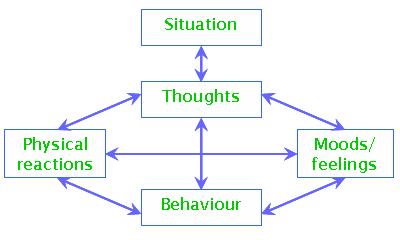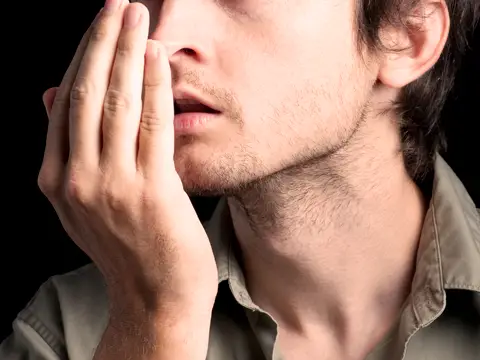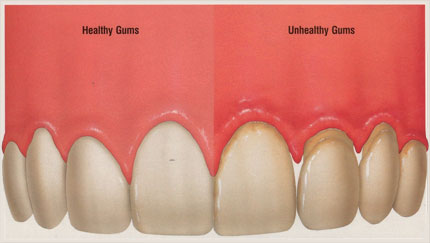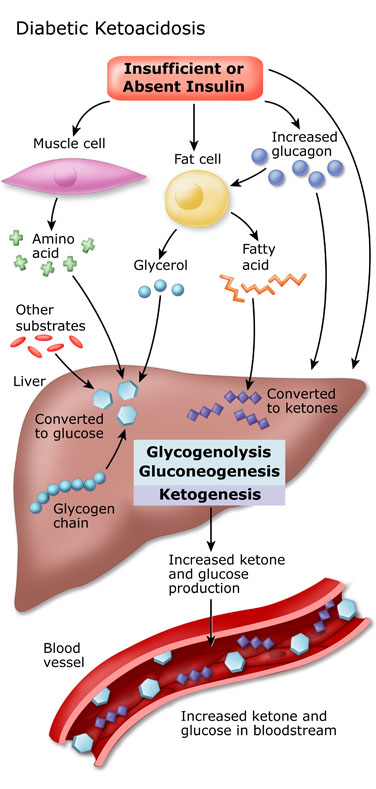Bad Breath Causes and Cures
Bad breath can be an embarrassing issue to tackle. Most of us will feel as though we’ve had a bad breath day at some point in our lives. Usually this is fixed by a quick brushing of teeth or swill of mouth wash. However for some dealing with bad breath, or halitosis, can be a socially devastating experience.
Bad Breath or ‘Halitosis’ and its Causes
Problems with bad breath do not always start in the mouth. Although oral health is the most likely cause of bad breath, it can also depend on other issues.
Low Carb Diet Bad Breath
What we eat and drink has a huge effect on our breath. Eating foods with a strong flavour, such as garlic and spices can cause temporary bad breath. However many will find that simply cutting down on these ingredients will solve the problem quickly.
Dieting, especially low-carbohydrate based diets, can also cause bad breath. This is because as the body starts to break down fat at a fast rate, chemicals called ketones are produced. These ketones escape through urine and unfortunately, your breath. Ketone-based bad breath has a distinct odour. If you are on a low-carb diet and suffer from bad breath, it is more than likely that ketosis is to blame.
Bad breath is an unfortunate side-effect of dieting. However when the body is producing ketones, it is proof that you are actually burning fat. Products such as Ketostix can show if you are producing ketones. They are dip-sticks for testing levels of ketones in your urine. These will help you find out if your bad breath is ketosis, whilst also providing proof that you are loosing weight via fat loss.
Cigarette Bad Breath
Bad breath is obviously the least important health issue caused by smoking. However, as well as the damage to your lungs, smoking can cause gum disease. Gums can become irritated by smoke, causing further complications such as gum disease. Gum disease, also known as gingivitis, makes gums swollen, infected and painful.
It is mostly noticed when there is blood whilst brushing your teeth. The gum tissue is very sensitive to cigarette smoke, and is eroded over time. This is mostly caused by the extra bacteria in the mouth due to smoking. This bacteria cause plaque, which will deteriorate the gums and then cause bad breath.
The most sensible cure for bad breath due to smoking is obviously to stop smoking. However keeping up to date with dental appointments and maintaining good oral health will help stop cigarette bad breath.
The NHS provides a “Quit kit” to will help you to stop smoking.
Medicines That Cause Bad Breath
There are a number of medicines that cause bad breath. If these drugs are vital to your health, bad breath is an unfortunate yet unavoidable side effect. However if you are deeply concerned about your bad breath, talking to your GP may help. They maybe able to offer you an alternative medicine to avoid getting bad breath.
Post Nasal Drip Bad Breath
Post nasal drip is also known as upper airway cough syndrome. It is caused by an excess production of mucous in the nose. This mucous then gathers in the throat causing bad breath. Post nasal drip can be a side-effect of further health issues, such as sinusitis or swallowing disorders.
Bad Breath in Babies and Children
Children can occasionally fall foul of bad breath, too. As stated by Dr Lewis First in this article for NBC 5 News, the main cause of halitosis in children is tooth decay. Many children dislike having to brush their teeth and see it as a chore. This is why it is important to try and make cleaning their teeth a fun experience.
There are a range of toothbrushes available to encourage your child to brush. Finding a fun toothbrush for your child will help them take an interest in brushing. Character brushes based on cartoons and toys are a firm winner with most children. Also you will find many of these character brushes include built-in flashing lights. These Barbie and Spiderman
toothbrushes light up once activated, not only to entertain, but to also act as a timer. They will flash continuously for 1-2 minutes, ensuring your child has brushed for the right amount of time.
Studies have also found that “mouth breathing” can also contribute towards halitosis in young children. Mouth breathing often takes place when a child is ill with a cold. Their noses become blocked and stuffy, leaving no option other than to breathe mainly through the mouth. The intake of air through the mouth then dries out saliva, leaving bacteria to fester. This is usually a short term problem that is solved once the child no longer has a cold. However taking extra time for brushing during this time can help lessen bad breath.
Bad Breath and Disease Symptoms
As mentioned previously, bad breath can sometimes be a symptom of an underlying health condition. Below we cover some of the more common illnesses and conditions that can include bad breath as a symptom.
Halitosis
Halitosis is simply the umbrella term for of all disorders that cause bad breath. This covers everything from morning breath to oral hygiene issues. Morning breath happens for the opposite reason that children suffer bad breath due to mouth breathing. At night the mouth is exposed to less oxygen than during the day time. This lack of oxygen circulating around the mouth again allows the bacteria to breed. This is why ensuring you clean your mouth, teeth and gums properly before bed is so important for oral health.
Gum Disease
Gum disease, also known as gingivitis is the most common form of dental disease. It is caused by a build-up of plaque that then allows bacteria to grow in the mouth. This bacteria then starts to effect the gums and can lead to periodontitis. The most common symptoms of gingivitis are:
- bleeding gums, especially when brushing
- swelling of the gums
- inflammation
- changes in the colour of the gums, most notably a dark red colour
It is important to spot and treat gingivitis before it leads to periodontitis. Once periodontitis sets in it can destroy the gums when bacteria travels under the tooth. Teeth can then become loose as the gums become more infected. Eventually this will lead to loss of teeth permanently.
Bad breath caused by gingivitis is easily remedied by keeping on top of oral hygiene. Making visits to your dentist for check-ups and maintaining a good brushing routine.
Kidney Disease
The kidneys are vital organs that help to cleanse the blood and keep your body chemicals balanced. Waste and toxins that are taken into the body through food, air and drink eventually end up in your blood. It is the job of the kidneys to filter the blood of these toxins and then convert them to urine. People with kidney disease will often complain of bad breath. This is because when the kidneys are not functioning properly, they fail to remove toxins from the body. One of these toxins is ammonia, which is found in urine. This build-up of toxins within the body then escapes through the digestive system to the mouth, causing a ‘fishy odour’ in the breath.
Diabetes
Bad breath caused by diabetes is related to ketosis, as mentioned in our low carb diet section. However as ketosis is a temporary side-effect of low-carb dieting, diabetic ketoacidosis can be life-threating.
Generally found in people with type 1 diabetes, ketoacidosis is caused by a lack of insulin to convert blood sugars to energy. Instead the body will start metabolising fat stores rather than converting sugars from food. This rapid burning of fat causes an influx of ketones; a byproduct of fat breakdown. The body will then become overwhelmed with ketones which are highly acidic, and change the PH of the blood.
The presence of these ketones within the digestive system then cause bad breath as they escape the body via urine or the mouth. This in turn causes the breath to smell unpleasant. Some people describe this as like the smell of the sweets called ‘pear drops’.
Dogs detecting diabetes in the breath
Specially trained dogs can detect the smell of ketones and are being used to help warn people with diabetes. So called ‘Hypo dogs‘, can alert people before they notice the symptoms themselves and can be especially helpful for small children or people whose glucose levels drop very quickly.
Sinus infection
Sinus infection, also known as sinusitis, is an inflammation of the lining of the sinuses. This is usually caused by a bacterial infection. The sinuses are located in several areas in the head. However it is the sinuses in the nose that cause bad breath when infected. Very similar to post nasal drip, the excess mucus produced can build up and allow bacteria to grow. This influx in bacteria produces a bad odour, that is noted as bad breath.
Constipation
When your body fails to pass solid waste on a regular basis this is called constipation. This then slows down the digestive process of food. Undigested food will then remain in the bowls where it becomes toxic and emits gas. This gas will eventually travel back up the digestive system and into the mouth, causing bad breath.
Keeping yourself regular and avoiding constipation is key to preventing bad breath. Statistics show that unto 25% of bad breath cases are caused by constipation. A diet of high fibre, fruit, veg and at least 4-6 glasses of water a day can prevent constipation. However it is also important to remain physically fit if this is possible. Maintaining a healthy weight and exercising the middle of the body will keep bowl muscles toned. This in turn will make passing solid waste easier and more regular, avoiding bad breath.
For people who find it hard to eat enough natural fibre, a useful alternative is fybogel drinks or psyllium
husks added to food.
Bad Breath Remedies
Sometimes it can be difficult to find a bad breath cure. Knowing the cause is your first step before trying to cure it. Disorders such as post nasal drip can often be cured using antibiotics or nasal steroids. However if your bad breath is due to oral hygiene rather than an underlying health condition it might be less simple to cure.
Treating and preventing bad breath should start with your daily brushing routine:
- Always ensure you spend at least 2 minutes brushing with a quality toothpaste. Pastes such as Weleda’s Salt Toothpaste
include natural ingredients that not only freshen but help neutralise plaque acids.
- Ensure you floss between your teeth every time you brush, to further prevent plaque and tartar build-up. Plaque is the number one cause of gum disease and then bad breath.
- It will help to brush your tongue as well as your teeth. Using a soft bristle brush for a longer brushing time is advised. The softer brushes cause less damage to gums and the tongue.
- Use a mouth wash several times a day. It can help to carry a small bottle of mouth wash around with you for between snacks and meals. Brushing your teeth whilst at work or out and about can be difficult. However a quick swill of quality mouth wash between meals will help to dislodge particles of food until you can brush again.
- Avoid brushing teeth for around 30 minutes after drinking fruit juice. Due to the acid in the juice, brushing straight away can cause further erosion of the teeth.
Once you have a solid oral hygiene routine in place, it is advised that you continue to avoid spicy foods, alcohol intake, smoking and coffee drinking. If after 2 weeks you are still suffering from bad breath, it may be time to consult your GP and dentist. They can rule out any underlying health issues that could be the cause of your bad breath.
Cognitive Behavioural Therapy for Bad Breath
Although bad breath is a very serious concern for the sufferer, it is not rare for the bad smell to be a psychological issue. Some can become convinced that they suffer bad breath when they actually don’t. In his recent interview with BBC Radio 4, Dr Tim Hodgson says up to 80% of self-referring halitosis patients don’t really have bad breath.
This paranoia of having bad breath is called halitophobia. People can become obsessed with oral hygiene and avoid social situations due to embarrassment of their bad breath. If a dental professional or GP feels halitosis is not present, the patient will be referred for cognitive behavioural therapy.

Cognitive Behavioural Therapy helps a patient with anxieties to understand the link between how they think, feel and act.
Cognitive behavioural therapy is usually referred to by the initials CBT. CBT is a therapy that involves discussing problems with a professional to find the root of your problems. CBT helps you to examine your emotions, actions and thoughts to understand how they are all interlinked.
Often those that are referred for CBT have at some time in the past suffered from bad breath. However this is usually no longer a problem yet they still think in the same way as they did during that time. Patients create a perception of themselves based on situations that occurred during the previous period of bad breath. This builds an anxiety that makes them concentrate on potential problems related to bad breath.
This is where cognitive behavioural therapy comes in. CBT sessions help the patient to see that their negative actions or negative reactions of those around them are actually caused by their own negative thoughts. This in turn helps the patient to filter all social and emotional information relating to bad breath equally. Rather than concentrating on only the negative they can see and feel, CBT helps them to interpret their apparent bad breath issue in a clearer light.
Products That May Help with Bad Breath
We have compiled a selection of over-the-counter products that are available to treat bad breath. If you have any recommendations or any experience with these products, please comment below.
Some of our top picks are:
TetroBreath Oral Hygiene Kit
This all inclusive oral hygiene kit has garnered fantastic reviews. It includes an oral rinse, tooth gel, tongue scraper and tooth brush all specifically designed to eliminate bad breath.
One of the many five star reviews on amazon comes from bumblebee:
It really does help! I ordered it for my close relative who was feeling really bad about her bad breath and although I really doubted it would help, it worked and I really do recommend that product to anyone who has bad breath! 🙂
Tung Brush for Treating Bad Breath and Tongue Gunk
The Tung Brush is especially designed to remove odour caused by bacteria. The unique design of the flat head and bristles keep the tongue extra clean to avoid bad breath.
This review by amazon reviewer “Me” explains how important tongue hygiene is in combating bad breath:
This product is absolutely amazing. 80% of bad breath comes from the back of your tongue. I’m surprised no one else has thought of this idea. We see tongue scrapers and mouthwashes on the market but we hardly see a good quality tongue brush to clean out tongue.
All the companies want us to buy mouthwashes to clean and freshen out breath, but the truth is that mouthwash just masks your breath for a very short period..that’s it. It won’t remove the bacteria, it won’t scrub it off, it will just stay there.
Now about this Tung Brush. There is also a special kind of zinc tongue gel sample that comes with this brush, which I think is not very good. This is how I use the brush, firstly after brushing your teeth with your toothbrush, apply a strip of normal toothpase (anything that you normally use, I use Aquafresh), then put some water onto it, and then scrub your tongue with it, but only go from back to front motions not back, front, front back etc. But most importantly remember your focus is to clean the very back of your tongue as this is where all the odour smelling bacteria is! This may make you gag a few times, but it is worth it. Afterwards spit, rinse and gargle. And now your tongue and mouth will feel so clean, that your sense of taste will change aswell, it will feel much cleaner and fresher.
You can also buy a Tung tongue scraper from Amazon to use after the Tung brush, this just adds to removing even more bacteria and foul smelling breath.
This is my first review, I wrote it because I think this Tung Brush is an absolute essential for clean and fresh breath. It really will affect your sense of taste.
Transcript from Video
00:01 Speaker 1: From bad hair, to bad breath. Halitosis is a tricky problem for us GP’s, not because we’re particularly prone to it, you understand, but because we’re often the last port of call for desperate patients. People complaining of persistent bad breath often end up coming back to their GP after their dentist has checked their mouth and various specialists who have looked at their throats, lungs and stomach. So, what can the GP add if there is no abnormality to find? Well, the first thing he or she can do is actually check that their patient has bad breath. Offering to smell someone’s breath can be embarrassing for both parties but it’s essential, as I discovered when I met Tim Hodgson, Consultant in oral medicine at the Eastern Dental Hospital in London.
00:42 Tim Hodgson: I think the most important thing to say to these individuals is, “Is it there or is it not?” And you’ve got to be very careful how you say it cause often these people are coming to you with a problem that they feel is real. And then, if you turn immediately around to them and say, “This is not real”, you can run into problems. But I think it’s very important within the first discussion to smell the breath cause that’s the gold standard test, and if they haven’t got bad breath you can say at that moment in time they don’t have halitosis but it is possible that in times previously that they had. And it’s often the case that people have halitosis, address their gum health.
01:22 S1: And gum health being the most common cause of it?
01:24 TH: Yeah. And after that they’re left with this perception that they’ve still got halitosis even though they’ve corrected the cause. And that’s sometimes reinforced by family members, friends and relatives. And often they come along with a very considered construct that people on their bus or on the Tube are turning away from them or covering their face or won’t talk to them directly because they feel they’ve got bad breath. And they look, almost looking for people who are avoiding them because of their bad breath.
01:58 S1: And that reinforces their notion that they’ve got bad breath.
01:59 TH: Yeah, it reinforces and helps build a construct in their own head.
02:03 S1: As a rough guide, what sort of proportion of people that you see here with halitosis would, in your mind, not necessarily have a real problem but have a perceived problem? Are they a significant minority?
02:14 TH: I would say probably 80% of patients referred with halitosis to our service don’t have halitosis.
02:21 S1: Do they believe you when you smell their breath and say, “Look, I can’t smell anything”.
02:26 TH: Some do, and others don’t.
02:29 S1: Working along side Tim Hodgson at the Eastern Dental Hospital is clinical psychologist, Claire Daniel.
02:34 Claire Daniel: For some of these people, they may well have had halitosis in the past so they’ve set up this way of thinking is… We work in a cognitive behavioural way which basically looks at the way in which people think, they way in which they feel, what they do and the physical symptoms and how they all interact. So, this patient in the past may well have had halitosis. They’ve set up this belief system thinking about their breath, maybe they’re focusing on their breath. And as Tim said, they’ve had past experiences of people reinforcing that they’ve got halitosis. Now, even if the halitosis disappears some patients may well remain quite anxious about that and so they will keep on focusing on the potential symptoms. And they become very biased in the way in which they see and hear information so they become very focused on the negative stuff that will reinforce their beliefs and will sort of ignore the other bits of information that may well support a more helpful, more realistic way of thinking about their situation.
03:25 S1: So, when a doctor or a dentist tells them that they haven’t got bad breath, they’ll say, “Well, that’s not true or I haven’t got my bad breath today but, trust me, I had it yesterday because I saw someone in the pub wince”.
03:36 CD: Yes, absolutely. So, it’s either, “Well yes, it’s okay today but it wasn’t yesterday or it won’t be tomorrow”. But also, some people initially will be reassured by somebody saying they haven’t got bad breath but, as we know, reassurance is for people who believe they have medical difficulties can only be short-lived for most people. So, they’ll feel very reassured in the consulting room and then will go home and their whole belief system will trigger again, maybe reinforced by the people. So, their anxiety maintains.
04:02 S1: Looking at this from the outside, Tim’s got perhaps the easy part of the job when he says, “Look, I don’t think you have halitosis”, and he then does the referral to you.
04:09 CD: Absolutely.
04:09 S1: And you’ve got to do something about it. It’s quite a complex problem so what can you do and how successful might you be?
04:14 CD: Yeah, it’s very complex. Cognitive behavioural therapy is an anxiety about health in general, we don’t set out to tell people that they’re wrong. We set out to try and help people understand what’s going on. So, we don’t just talk about their physical reported symptoms. We’ll talk about the way in which they’re interpreting things, they way in which they’re thinking about things, and how those interpretations actually may be unhelpful. They might seem helpful to the patients, like go to the doctor, go to the dentist, focus on their breath to check, maybe clean their teeth, but in the long term they can be very unhelpful and maintain the problem. So, we help people to take a broader outlook on their situation. We don’t tell them what it’s not, we help them to understand what it could be and then we help them to develop evidence to support what it could be rather than maybe what it’s not.
05:01 S1: And practically, what is involved and how often do you see them?
05:04 CD: So, we’d see people maybe every week, every two weeks.
05:08 S1: Is this one-on-one?
05:09 CD: Yes, one-on-one, for this particular condition. One-on-one, so one patient with one psychologist for about 50 minutes about, on average about eight times.
05:17 S1: And in terms of success rate, how effective is it?
05:20 CD: I would say, we do help… With particularly halitosis, we probably help about 80-90% of people.
05:28 S1: That’s pretty good.
05:28 CD: But I wouldn’t… But then it’s a continuum, we might help some people just a little bit. And I think with things like anxiety about health, it’s a life-long issue. We’re not just going to suddenly stop people’s anxieties. It’s about helping them to live with uncertainty and live with a degree of anxiety about their condition. So, they’ll still have times when they think their breath smells.
05:46 S1: Clinical psychologist Claire Daniel. Just time to tell you about the next Inside Health when I will be investigating the side effect of cancer treatment…





